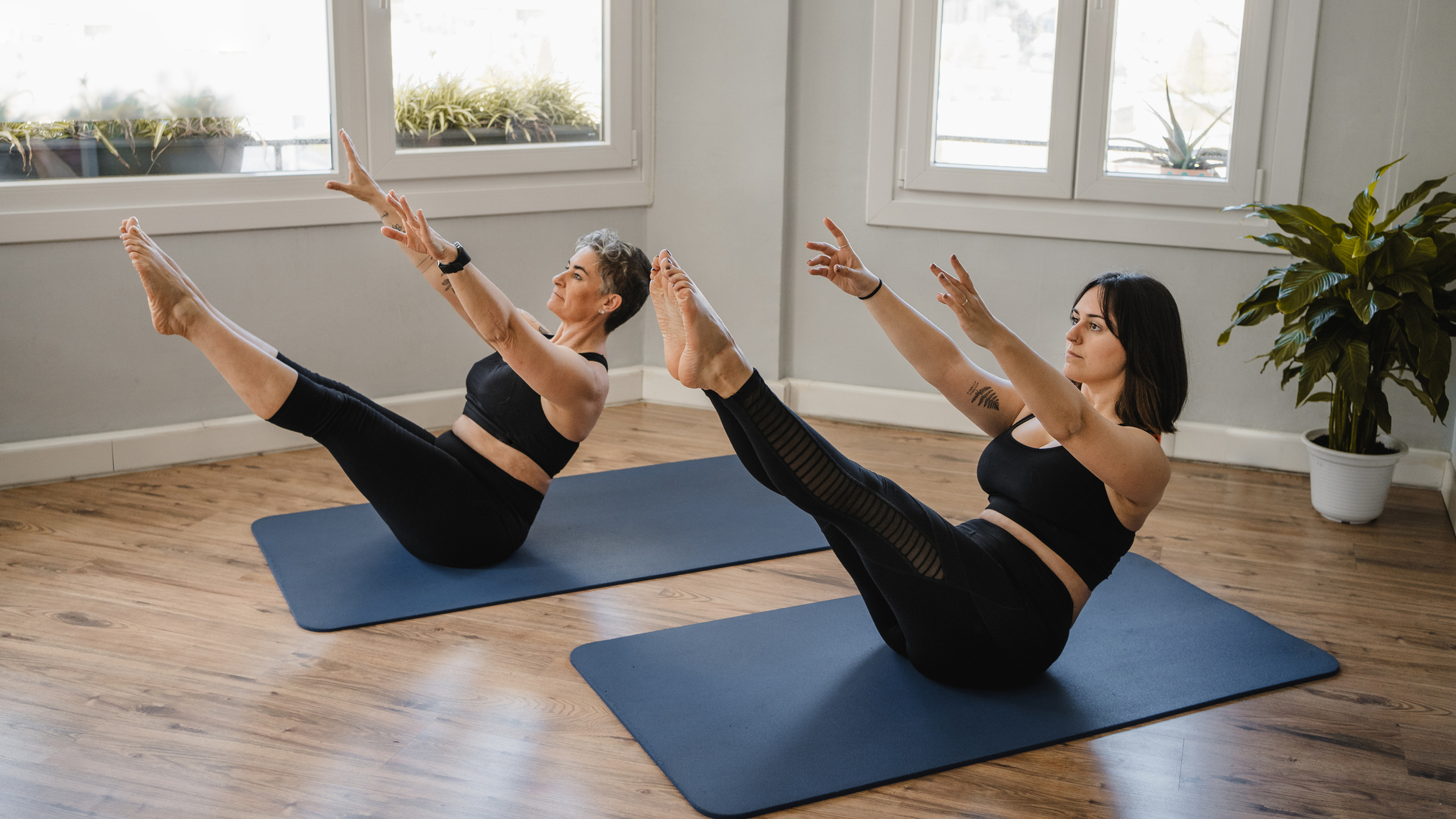
Pilates has experienced a resurgence in popularity in the past few years and it's not hard to see why—mat Pilates is one of the best ways to build strength without equipment.
The workout style was developed by Joseph Pilates in the early 20th century and its defining feature is the use of slow, controlled bodyweight movements to build muscular strength and endurance, particularly in the core.
To find out more about this particular style of movement, I spoke to Lottie Anderson, Pilates instructor and founder of Pilates studio Bondi Rise, to walk me through the major benefits of Pilates.
1. Pilates builds strength
Pilates is a form of resistance training, but unlike other forms of strength training, such as lifting weights or using machines, mat Pilates generally relies on using your bodyweight to create resistance, although it can also incorporate light weights and resistance bands.
One recent review found that Pilates is just as effective as other types of exercise in improving core strength and that it can positively influence muscle thickness and strength.
"Most of the moves in Pilates will work your main muscle groups," says Anderson, "and a lot of the moves incorporate lots of different muscle groups, which is why you see those results."
2. Pilates improves posture
"One of the fundamentals of Pilates is the spine and the posture," says Anderson. "One of the key cues we say in Pilates is shoulders down and back, because most people spend a lot of time hunched over their laptops, which means our bodies often naturally slump forward."
There are scientific studies to support this, too. A review published this year found that Pilates can significantly enhance spinal alignment.
3. Pilates improves mobility
"Pilates also focuses on the stabilizing muscles," says Anderson, meaning muscles like the rotator cuffs and hip stabilizers, which play a crucial role in joint health.
"These exercises protect the joints and ligaments, which can improve your mobility," says Anderson.
4. Pilates can improve your balance and coordination
This aspect is one of the reasons Pilates is so popular among older exercisers, with better balance and coordination helping to prevent accidents or falls and improve the way you move in everyday life.
"In Pilates, we're always focussing on alignment, thinking about where your hips are and where your shoulders are, for example," says Anderson. "You also don't race through the moves. Instead, you have time to think and breathe into the move which can help with coordination."
5. Pilates is low-impact
Pilates is a type of low-impact exercise, which means it puts minimal pressure on the joints. "This means Pilates doesn't create inflammation in the joints, which is really good for people with injuries and people wanting to build up their strength," says Anderson.
Some types of weightlifting can put pressure on the joints, so Pilates is a good alternative if you want to develop muscle without that risk. "Even though it's low impact and you move at a slower pace, you'll still feel the burn because we're often working the muscles in isolation," says Anderson.
Try Pilates
Convinced? Then try this eight-move Pilates for beginners routine, or browse our picks of the best Pilates YouTube channels.







